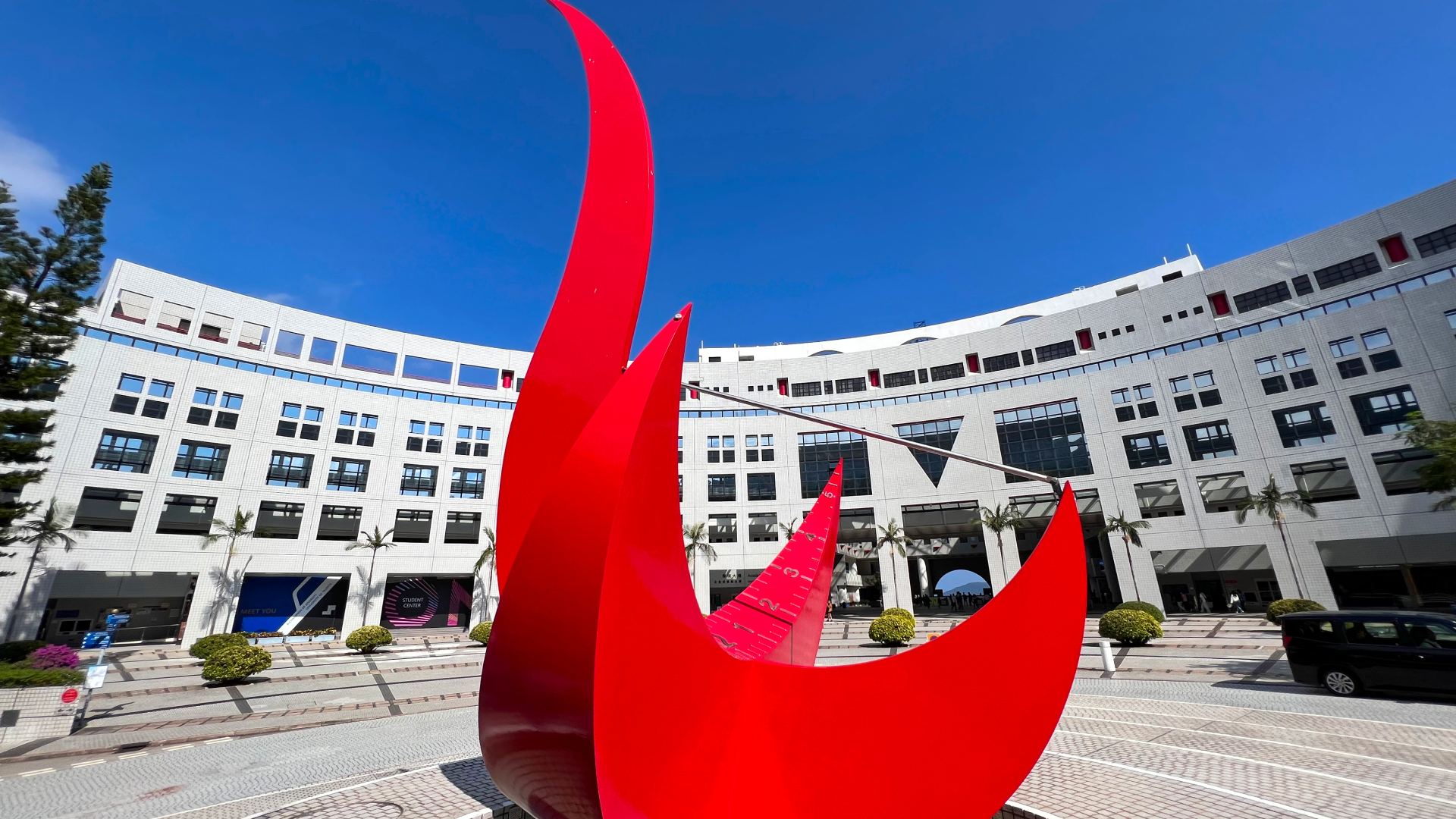News & Stories
2018
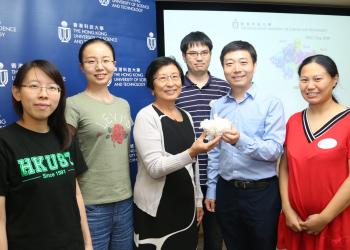
News
HKUST Scientists Determine Atomic Structure of DNA Replication Machine to Make Groundbreaking Discovery of DNA Replication Mechanism
Cells propagate by making copies of themselves through replicating their DNA genome, which are blueprints of their identities. Every full grown human came from a single fertilized egg cell whose genome is replicated approximately 10 million-billion times. What does the molecular machine that carries out this Herculean task look like? A research team led by scientists from the Hong Kong University of Science and Technology (HKUST) have determined the three dimensional structure of the DNA replication machinery at atomic resolution for the first time in history.
When DNA replication was first proposed based on its double helix structure over half a century ago, many believed that deciphering the machine that separates the two strands of DNA for replication is near to come. However, it turns out to be a much complicated task due to the large size, multi-partite nature (made up of three engines) and its flexibility of the machine.
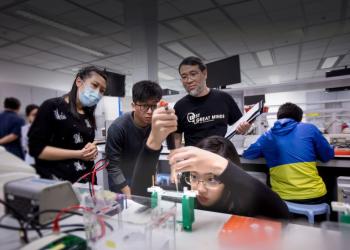
News
Propelling Hong Kong’s Future Scientists Forward
Staying ahead in an increasingly hyper-competitive global playing field requires sharp observation and analytical thinking, and with that, the ability to think critically and execute an experiment is equally important. To encourage Hong Kong’s budding science student to go beyond their textbooks and demonstrate their mastery of the biology concepts via their problem-solving skills, HKUST is hosting Hong Kong’s first biology competition for senior secondary students: The Hong Kong Joint-School Biology Olympiad (HKJSBO).
2015
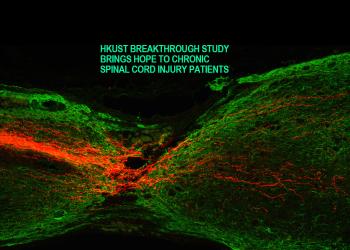
News
HKUST Breakthrough Study Brings Hope to Chronic Spinal Cord Injury Patients
HKUST researchers recently found a way to stimulate the growth of axons, which may mark a new beginning on chronic spinal cord injury (SCI) treatments.
SCI is a formidable hurdle that prevents a large number of injured axons from crossing the lesion, particularly the corticospinal tract (CST). Patients inflicted with SCI often suffer a loss of mobility, paralysis, and interferes with activities of daily life dramatically.
Led by Professor Kai Liu, Assistant Professor from Department of Life Sciences at HKUST, the HKUST research team initiated PTEN deletion on mice after pyramidotomy. Similar treatment procedures were carried out 4 months and 12 months after severe spinal cord injuries.
The team recorded a regenerative response of CST axons in all three samples – showing that PTEN deletion stimulates CST sprouting and regeneration, even though the injury was sustained a long time ago.
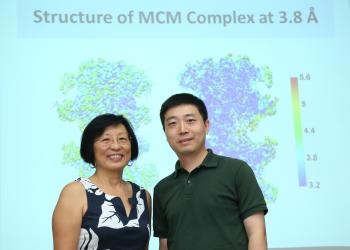
News
HKUST-Tsinghua University Scientists Solve the Structure of the MCM2-7 Complex that Destabilizes Duplex DNA for Unwinding
A team of scientists from the Division of Life Science and HKUST Jockey Club Institute for Advanced Study at the Hong Kong University of Science & Technology, and School of Life Sciences at Tsinghua University are the first to solve the near atomic structure of the MCM2-7 Complex, which plays a key role in destabilizing and unwinding duplex DNA during DNA replication.
The work is published in an article in the journal Nature on July 29, 2015 (http://dx.doi.org/10.1038/nature14685) and highlighted in a commentary in News and Views in the same issue (http://www.nature.com/nature).
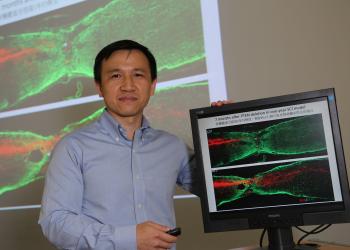
News
HKUST Breakthrough Study Brings Hope to Chronic Spinal Cord Injury Patients
A research team led by Prof Kai Liu, Assistant Professor from the Division of Life Science at the Hong Kong University of Science and Technology (HKUST), has successfully found a way to stimulate the growth of corticospinal tract (CST) axons, nerve fibres that control voluntary motor functions, spell the dawn of a new beginning on chronic spinal cord injury (SCI) treatments. The groundbreaking discoveries have been published in The Journal of Neuroscience.
2014

News
Potential Discovery of New Protein Therapeutics
As we all know, proteins are essential to all living organisms including human beings. Most of the enzymes are made of proteins, and there are countless enzymes on earth that function as catalysts, playing an important role in speeding up biological reactions in living cells. We simply cannot live without enzymes. Recently, a team of scientists at the IAS HKUST-Scripps R&D Laboratory has discovered 250 new proteins with previously unidentified activities. The research was led by Prof Paul Schimmel, the Ernest and Jean Hahn Professor of Molecular Biology and Chemistry at the Scripps Research Institute (California and Florida) and a visiting professor of the IAS. Detailed findings were published in Science in July.

News
HKUST-Scripps Scientists Discover Metamorphosed Protein-Building Enzymes as New Protein Therapeutics
A team led by scientists at the Hong Kong University of Science & Technology Jockey Club Institute for Advanced Study and The Scripps Research Institute (TSRI) R&D Laboratory (IAS HKUST-Scripps R&D Laboratory) and aTyr Pharma has found that ancient enzymes, known for their fundamental role in translating genetic information into proteins, evolved myriad other functions in humans. The surprising discovery of 250 new proteins with previously unidentified activities spanning from stem cell biology to immunology highlights an intriguing oddity of protein evolution as well as a potentially valuable new class of therapeutic proteins. These findings appear in the July 18, 2014 issue of Science.
2012
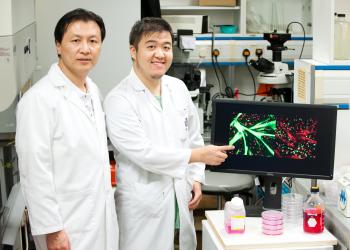
News
HKUST Identifies a Novel Protein in Muscle Stem Cells Fuelling hopes for Stem Cell Treatments for Muscular Dystrophy
Prof Zhenguo Wu of the Division of Life Science at the Hong Kong University of Science and Technology (HKUST) and his research team have discovered a novel protein Pax3/7BP that plays an influential role in skeletal muscle stem cells. This groundbreaking discovery could lead to more effective stem cell treatments for various muscle diseases including muscular dystrophy.
Skeletal muscle stem cells function differently at different developmental stages. They are responsible for normal skeletal muscle growth in young animals including humans and for injury-induced muscle regeneration in adult animals. In skeletal muscle tissues, Pax7 is a protein that is uniquely present in muscle stem cells and is indispensable for muscle stem cell functions in young animals. However, until recently how Pax7 regulates the functions of muscle stem cells had remained unclear.

